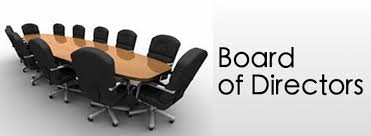How Many Board Members Meeting? How Often?
By Dani Robbins
Re-published with permission from nonprofit evolution blog
 The two questions I get asked on a regular basis are “What is the right number of board members?” and “How often should our board meet?” The answer to both is the same: whatever it takes. You should have the number of board members you need who meet as often as necessary to get the job done.
The two questions I get asked on a regular basis are “What is the right number of board members?” and “How often should our board meet?” The answer to both is the same: whatever it takes. You should have the number of board members you need who meet as often as necessary to get the job done.
While, it’s true, I appreciate that it’s not that helpful. When I serve as an Exec, my preference is boards of 24 members who meet monthly. I also like a range of board members to be included in the by-laws; 18-30 is my favorite. For me, it allows the access I need and the number I need to move the agency forward, but doesn’t hold us back if we have an excellent prospect and a full slate. I have primarily run smallish to mid-size social service agencies with budgets from $250k-1.4M, with 3-5 committees, some which had 1-3 sub-committees that allowed non board members to participate. I can see why it’s a lot for board members and also execs…yet, the goal is to meet as often as you need to get the job done. All of our jobs as leaders is to do what’s best for our agencies.
 There has been some movement in recent years toward boards meeting less often with committee meetings in between. Some boards meet every other month. Some boards (mine obviously) meet monthly and their committees do as well. Some boards meet quarterly.
There has been some movement in recent years toward boards meeting less often with committee meetings in between. Some boards meet every other month. Some boards (mine obviously) meet monthly and their committees do as well. Some boards meet quarterly.
I’m not a big fan of quarterly board meetings. They usually require a powerful executive committee to meet in between, which I believe alienates other board members. Powerful executive committees, who have the authority to act in lieu of the full board, take the majority vote and make it minority rule. Let me demonstrate: 24 board members with an executive committee of four officers and five committee chairs need a majority of that group to make decisions. This means that five people, which is 20% of your board, are making the decisions. If you don’t have committee chairs on the executive committee (and many agencies don’t), you are down to 3 people deciding for the board, just over 10%.
Meeting quarterly also serves to ensure your board members aren’t plugged in enough. They miss one meeting; they miss six months of information. Finally, I am not convinced quarterly meetings are often enough to maintain fiduciary responsibility. Three months later may be too late to get your arms around a budget issue or a program problem.
 Still, as I stated at the beginning, only you can decide what the best model is for your organization. I offer some questions for you as you consider the right number of meetings:
Still, as I stated at the beginning, only you can decide what the best model is for your organization. I offer some questions for you as you consider the right number of meetings:
- Do you have enough time to complete the work of the board?
- Are your meetings so rushed that generative and strategic discussions don’t happen, even when included on the agenda?
- Do your board members feel confident they know what is happening?
- Is the meeting schedule your board follows forcing, either by choice or need, your executive to do the work of the board?
- Is your executive missing opportunities because she cannot get board approval?
- Is your current schedule an effective model for your organization or merely convenient for its members?
The question of Board size is also all over the map. Some agencies have very large boards, which in and of itself becomes a problem to manage; 50 board members is a lot to track, communicate with and engage. Alternatively, some boards are very small and govern enormous agencies with multiple programs operating in a variety of locations. This can lend itself to the executive overstepping her role.
 Again, only you can decide what the best model is for your organization. I offer some questions as you consider the right number of members:
Again, only you can decide what the best model is for your organization. I offer some questions as you consider the right number of members:
- Is the number of members forcing, either by choice or need, your executive to do the work of the board?
- Do you have committees of one and, if so, are they effective?
- Are there committees you cannot introduce or board work you cannot accomplish because of lack of members?
- Do your members feel so overwhelmed that it is driving disengagement?
- Do you have a formal board development plan to attract, train, evaluate, recognize and renew board members?
- Is your current number of members an effective model for your organization?
How many and how often may very well lead to all the other pieces of board development and board engagement falling into place. They’re great questions and great place to start.
How have you answered the questions posed in this post? How many board members do you have and how often do they meet? As always, I welcome your insight, feedback and experience. Please share your ideas or suggestions. A rising tide raises all boats.

